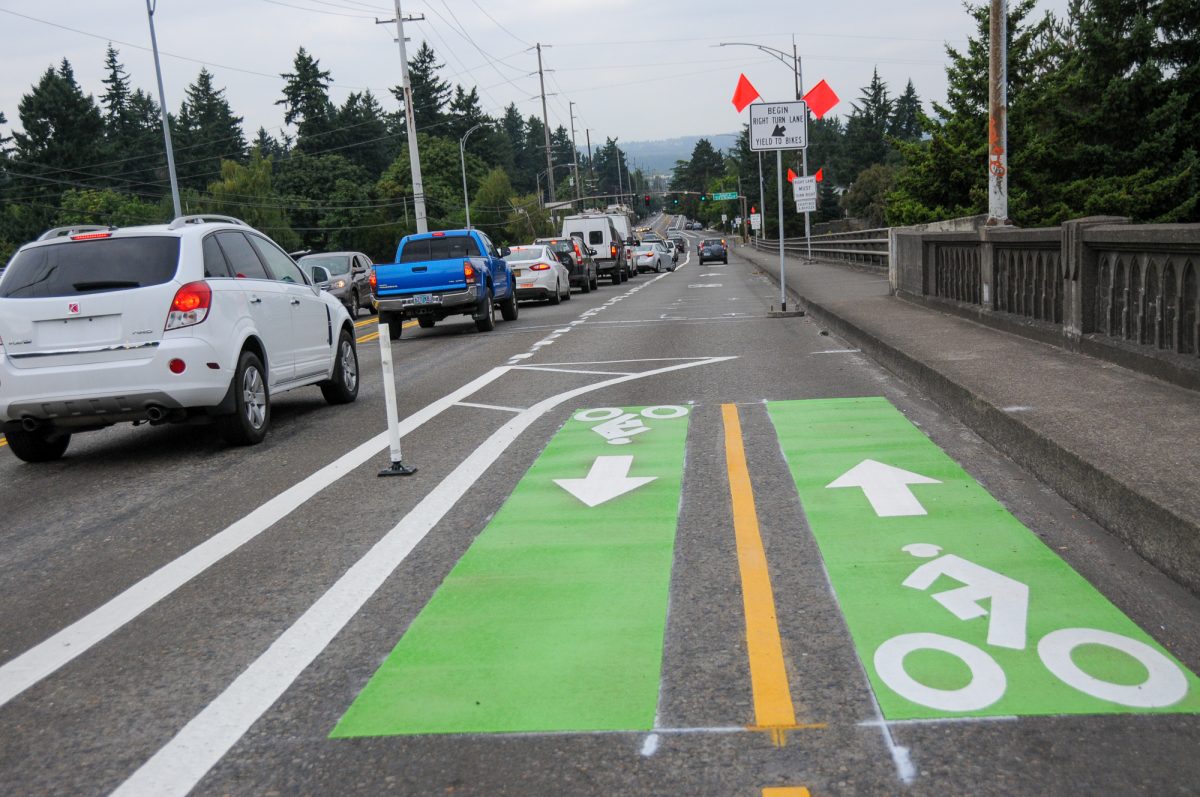
(Photos: J. Maus/BikePortland)
The Portland Bureau of Transportation recently completed phase one of a $331,000 project on Northeast 102nd Avenue that included new lanes for biking, fewer lanes for driving, and more. It’s part of a significant update of the corridor between NE Sandy and Weidler.
This section of 102nd is on the city’s “High Crash Network” list. It was the site of 258 crashes and three fatalities in the five years between 2012 and 2016. Like much of their work in east Portland these days, PBOT’s goal with this project is to tame a wide arterial known for fast and dangerous driving while adding better access for walkers, bicycle riders and transit users. Prior to this project 102nd had a cross-section that included seven lanes of driving access: two for parking cars, two for through traffic, and one center turn lane. The new cross section has swapped two of those through lanes for cycling-only lanes.
In addition to the restriping, PBOT has installed four new crosswalks.

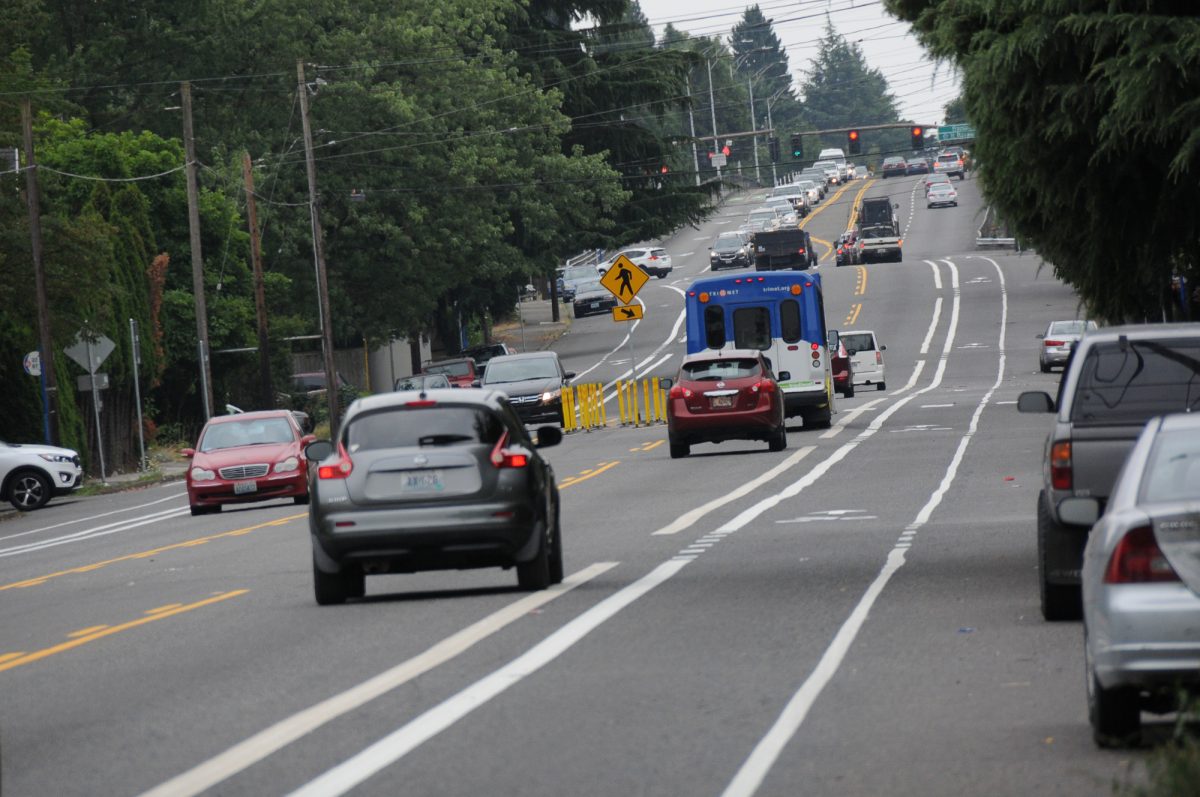
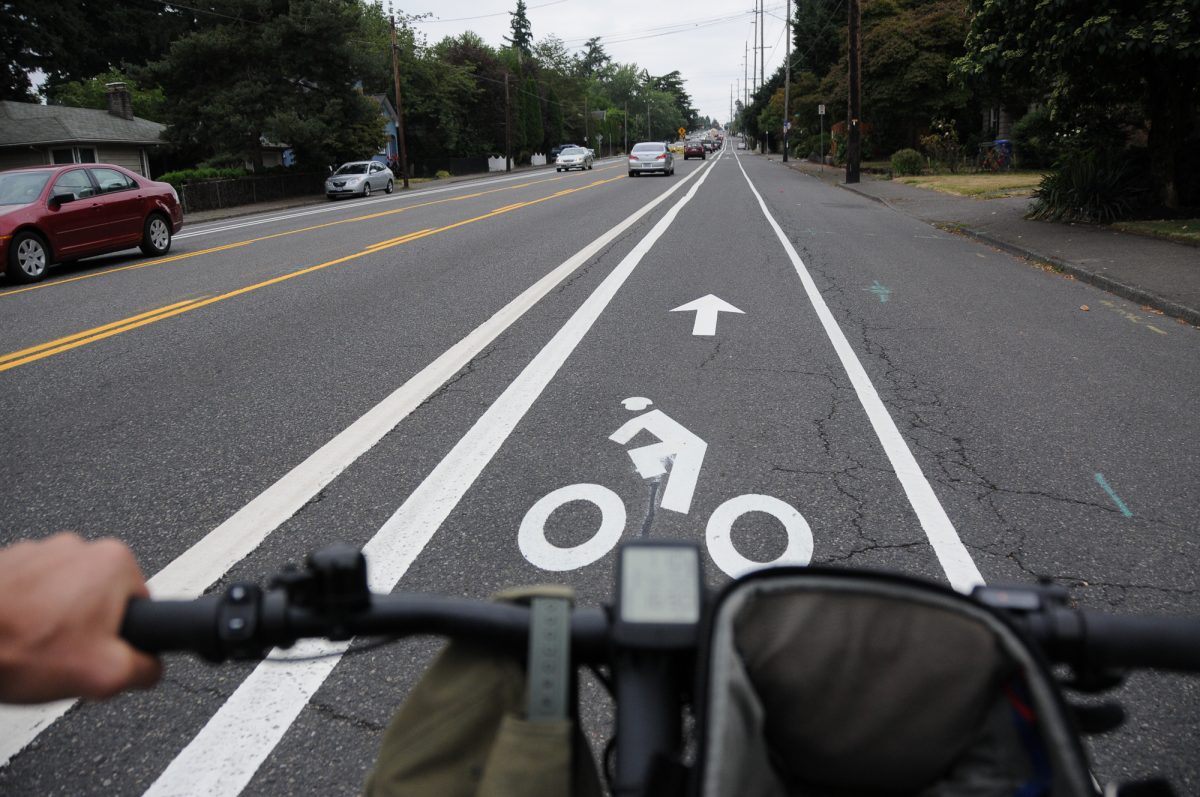
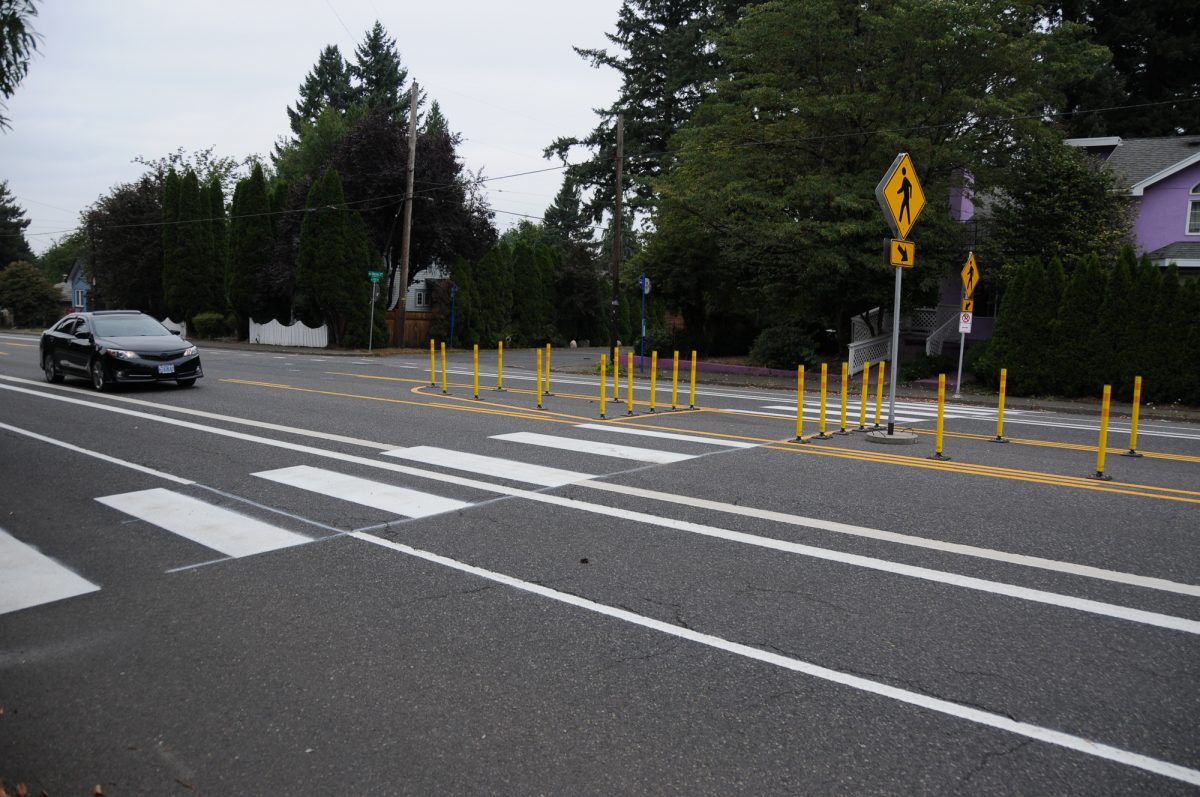
The northern section of the project is pretty standard. The new bike lanes are buffered and they feel nice and wide. There’s room to ride away from the door zone on the right and drivers on the left. Unfortunately the bike lanes offer only paint for protection. (Unlike other recent projects the city didn’t opt for a parking-protected bike lane.)
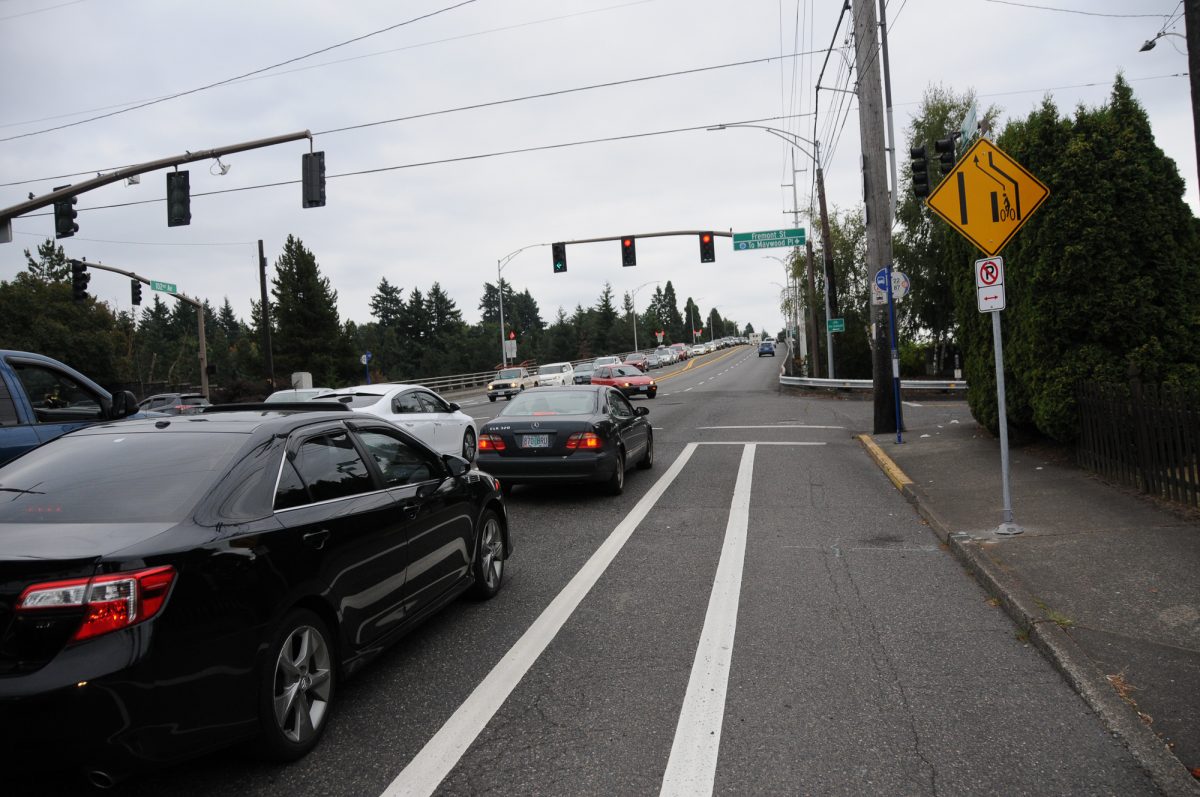
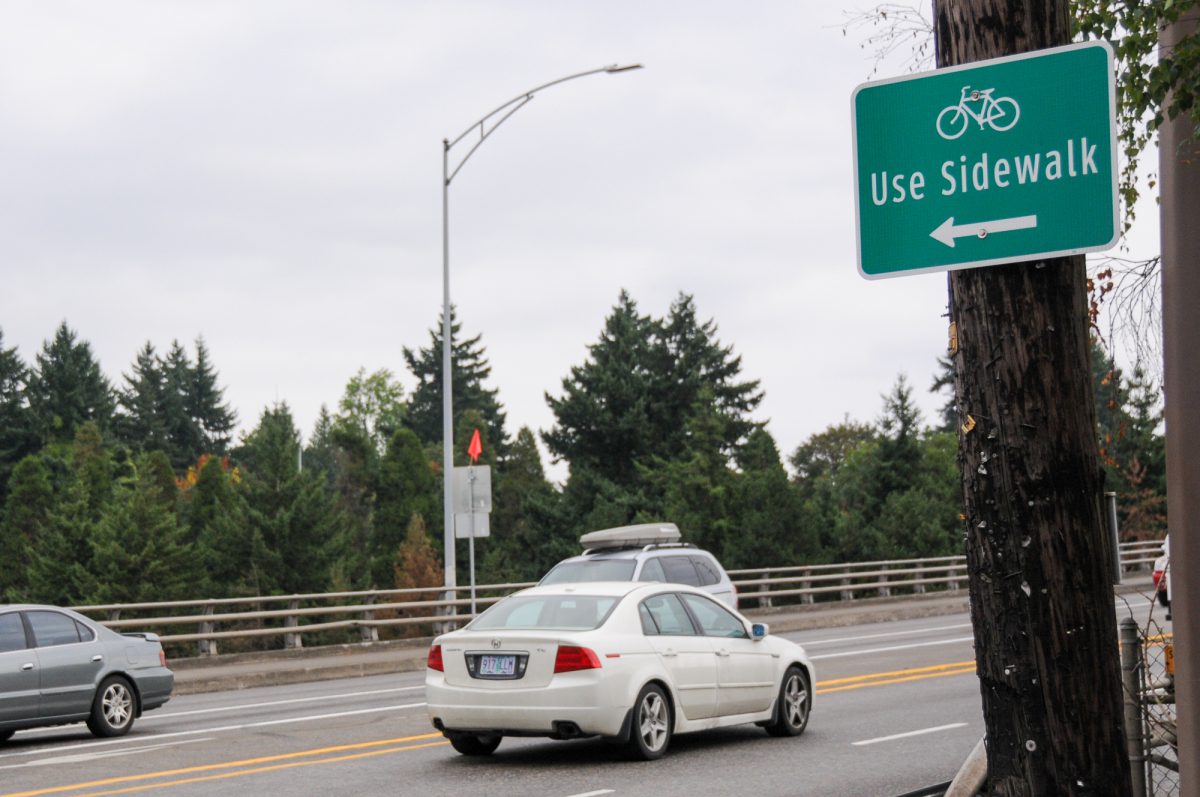
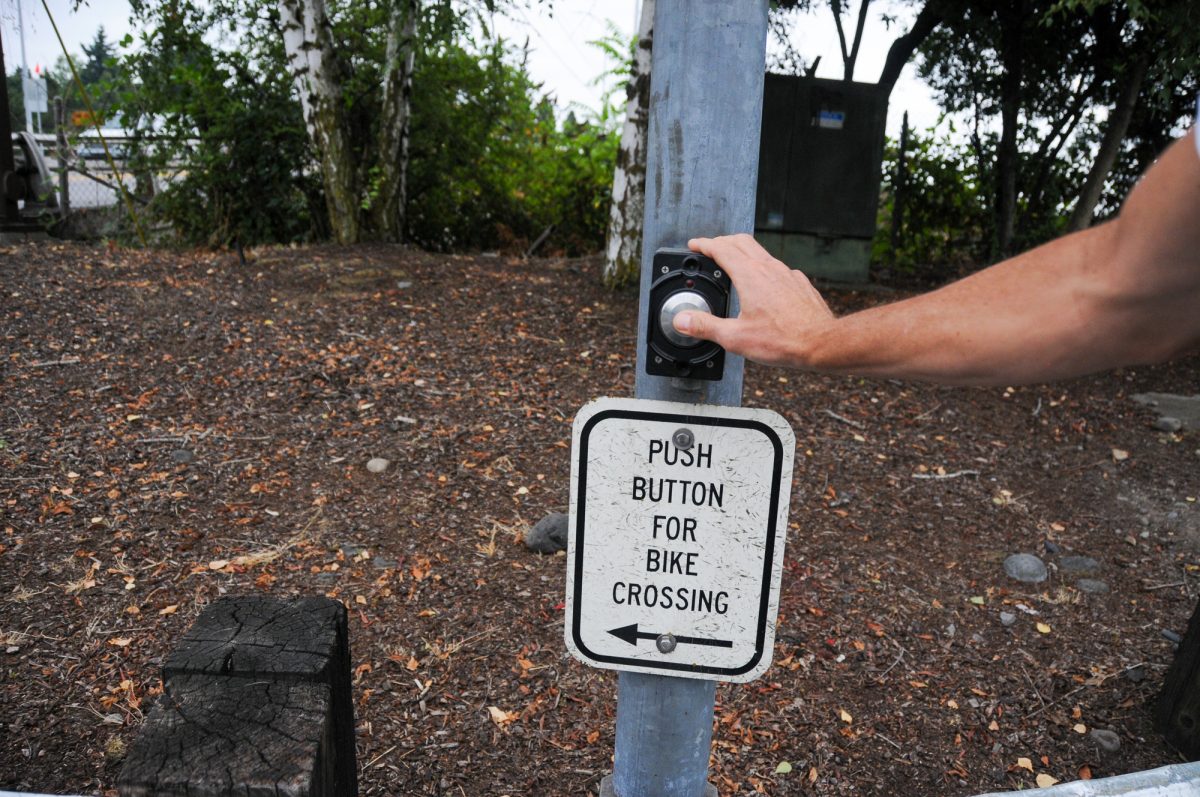
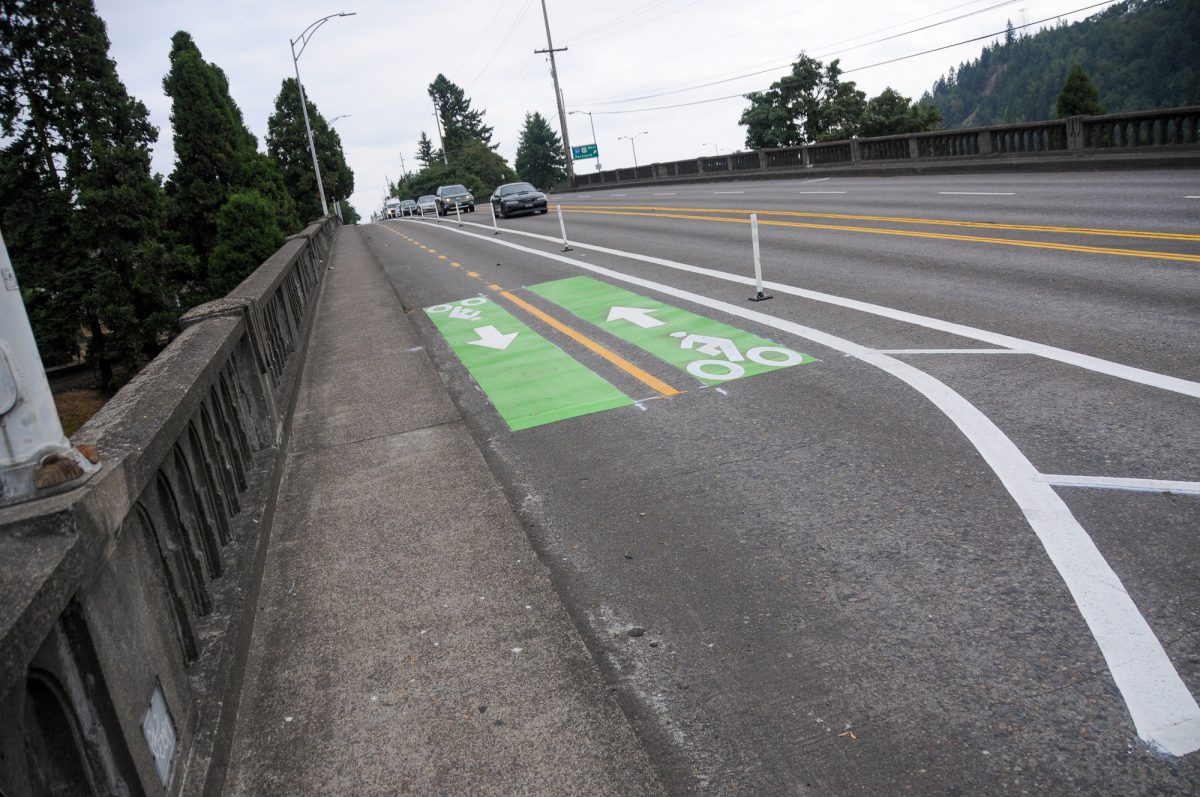
As I biked south from Prescott the bike lane ended at Fremont (upper left photo). It took a few seconds to figure out what I was supposed to do. I noticed a “Use Sidewalk” sign and found a beg button on the southwest corner of the intersection. I used the signal to cross safely to the east side of the street where I found myself on the sidewalk going southbound (against traffic) over Interstate 84. Then I saw the two-way (a.k.a. “bi-directional”) bike lane that begins about mid-span on the overpass. PBOT has yet to build a ramp down to it, so I lowered myself down a big curb to give it a try.
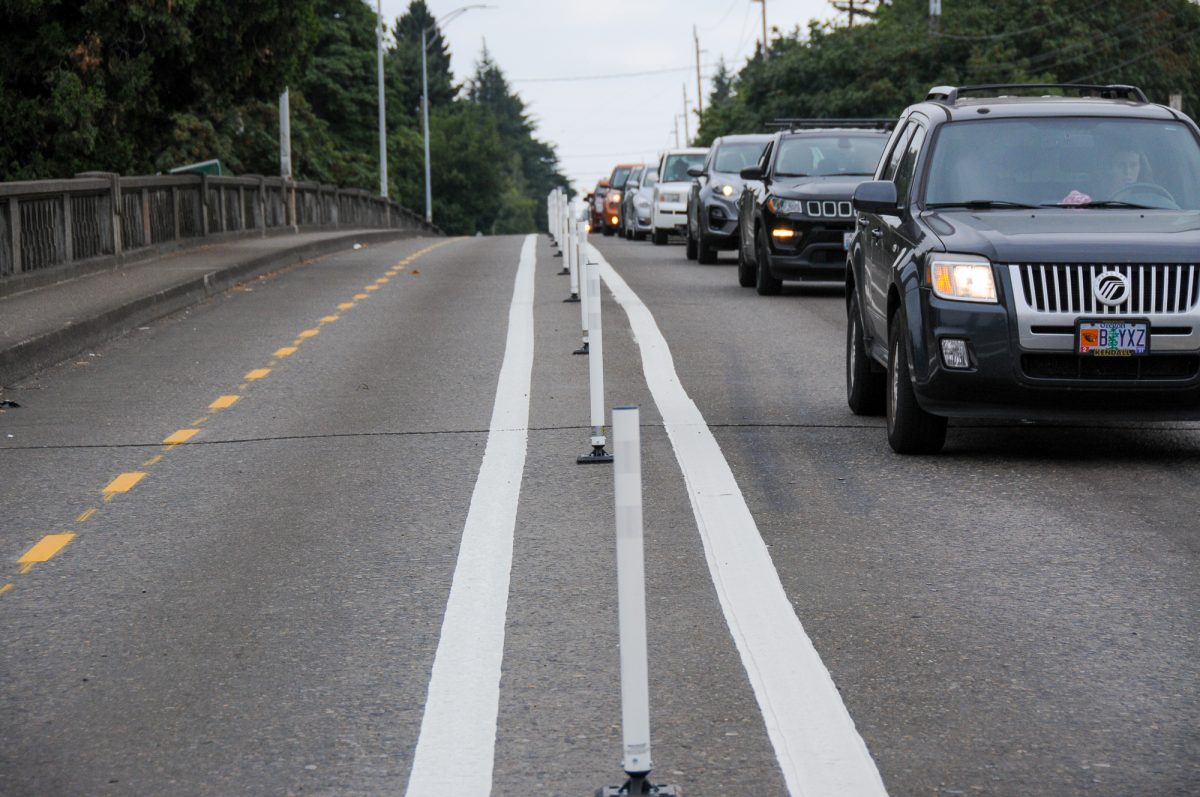
The two-way bike lane felt nice and wide as I rode against bumper-to-bumper traffic. Then on the south side of the overpass near NE Morris Court, things got interesting: PBOT has installed stop signs (which will be yield-when-safe signs on January 1st) between the two bike lanes at NE Morris Court and NE Morris Street.
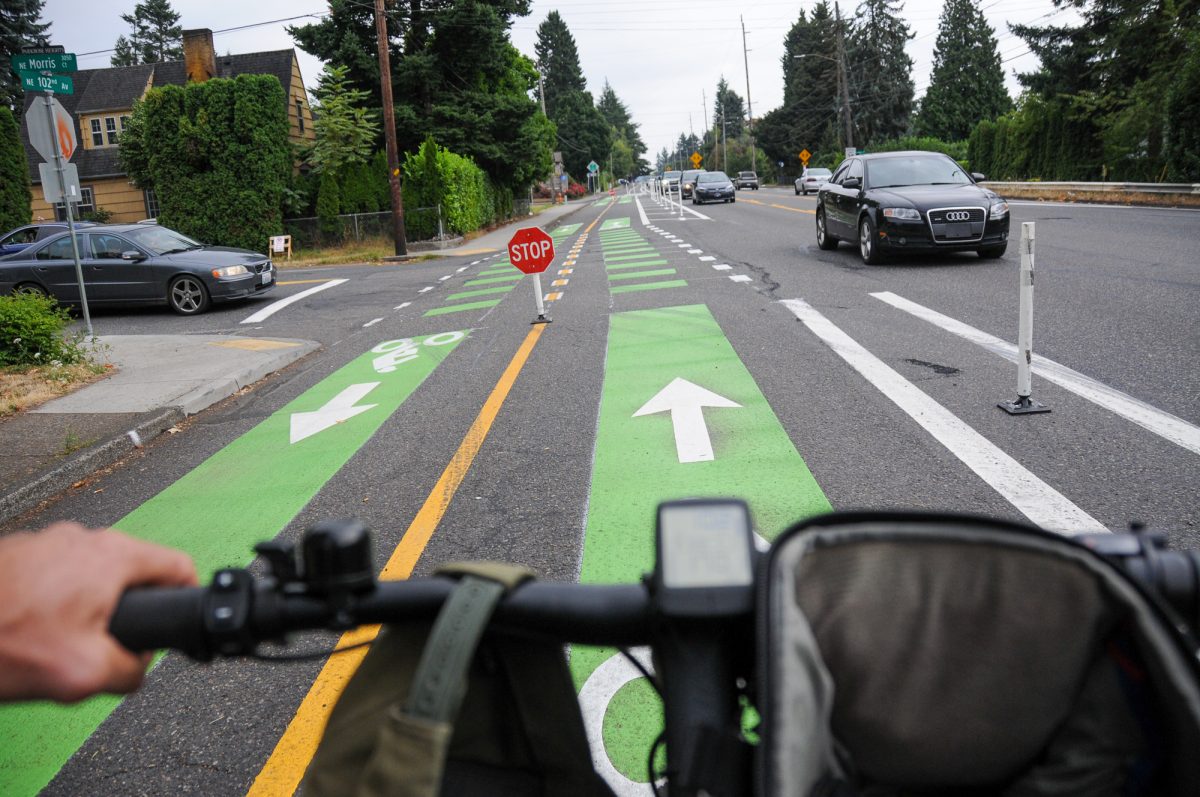
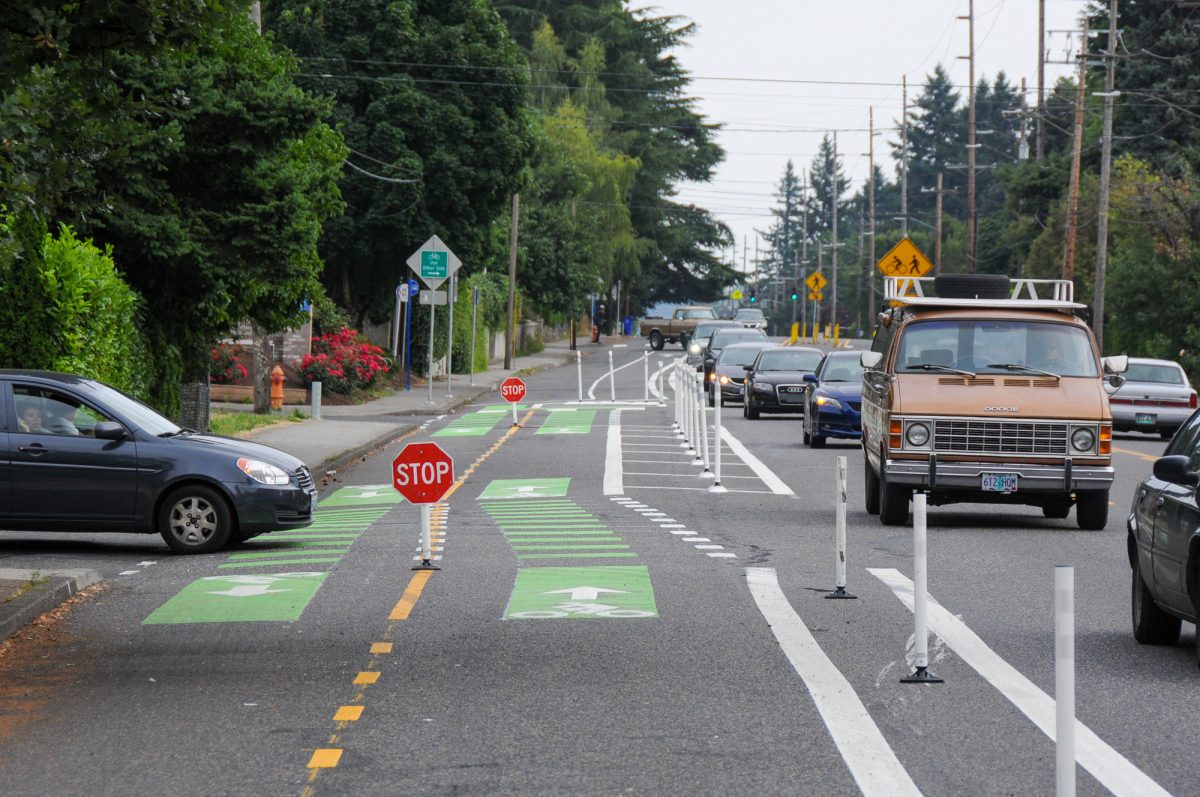
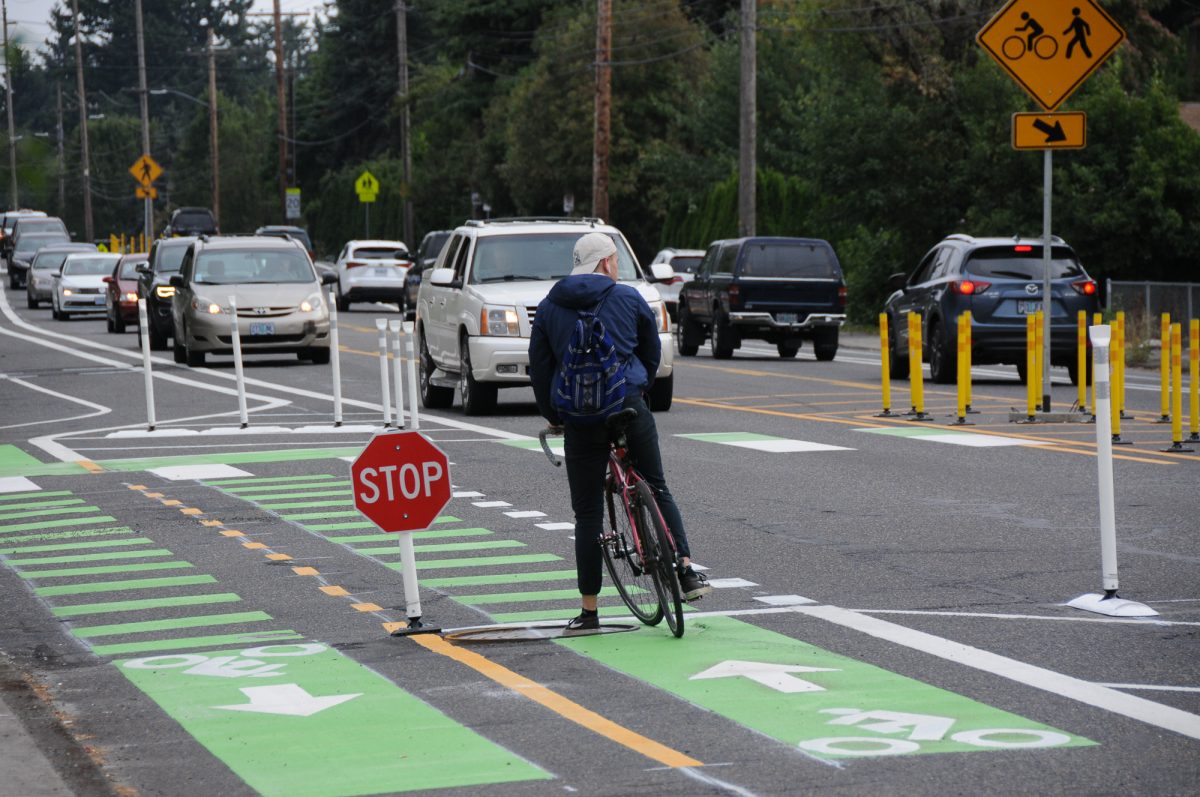


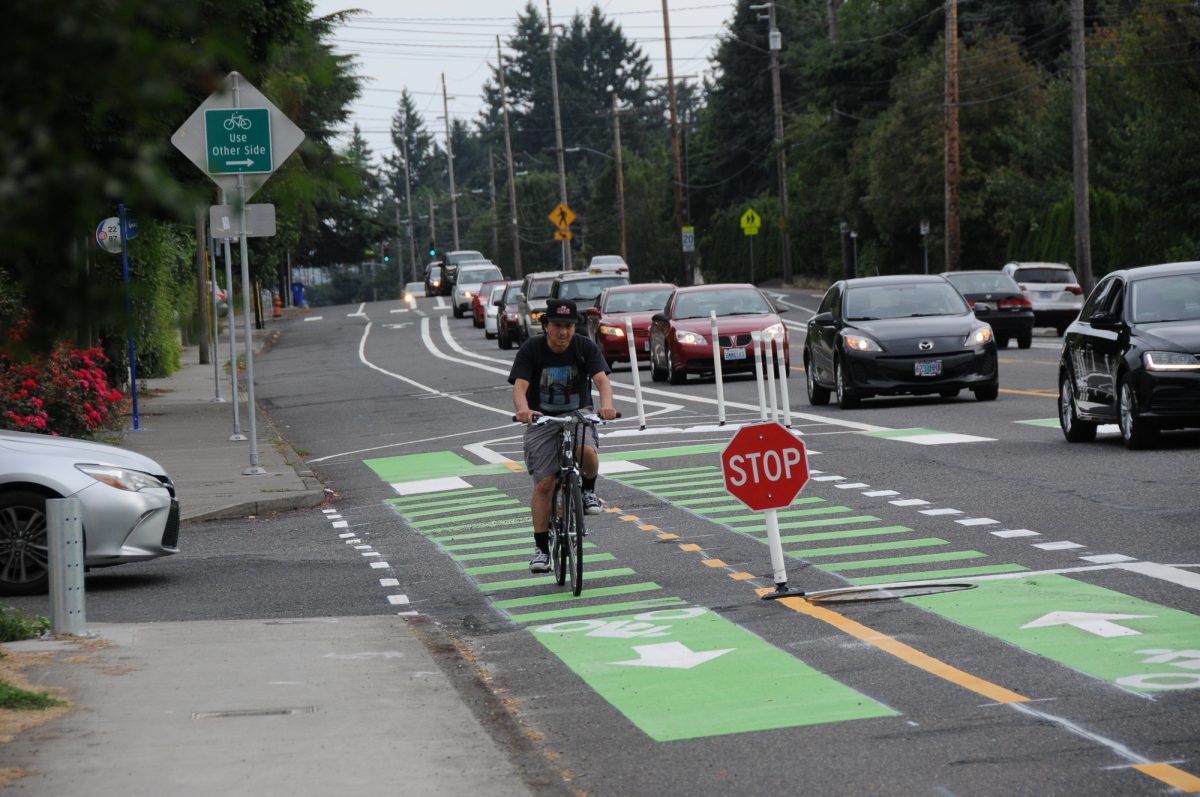
I don’t recall ever seeing stop signs like this before. I was there during the evening rush-hour and as I approached the stop signs there was a lot going on. People were pulling out of a neighborhood on my left, people were turning left into the neighborhood over my right shoulder, and people were turning right into the neighborhood in front of me.
Here’s how it looked on video:
Advertisement
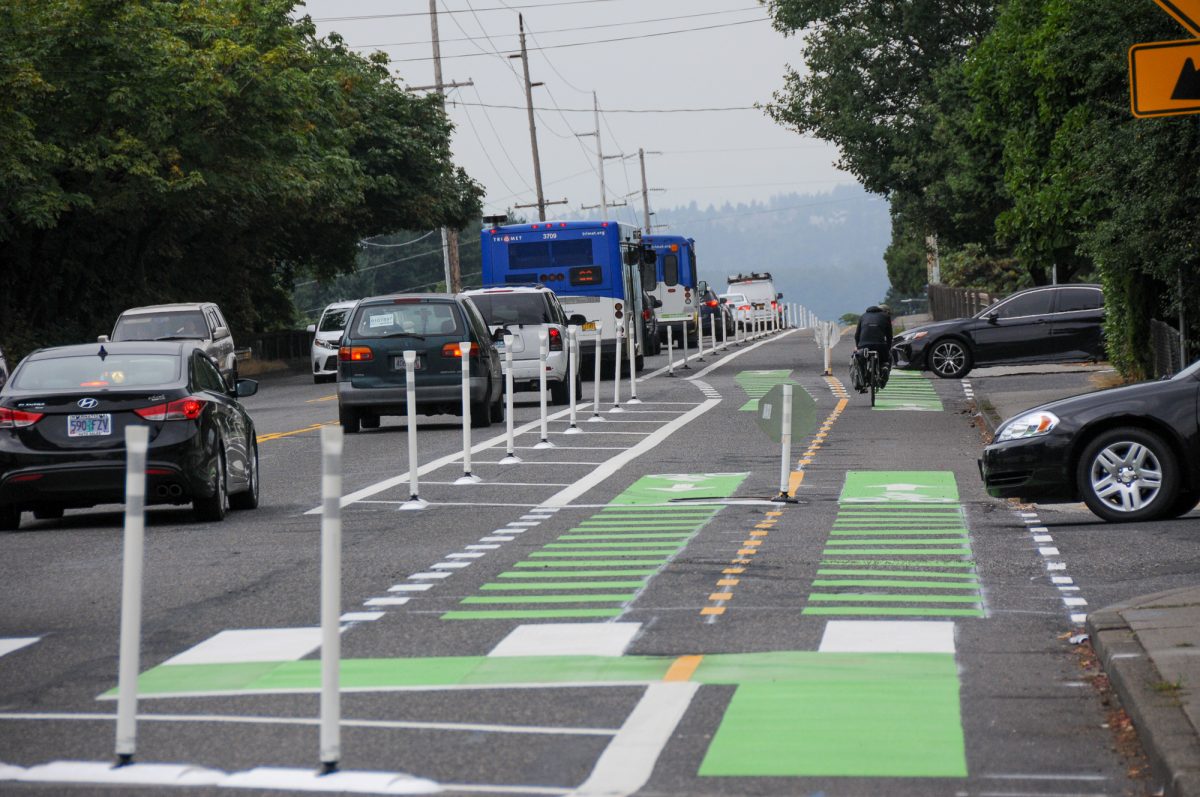
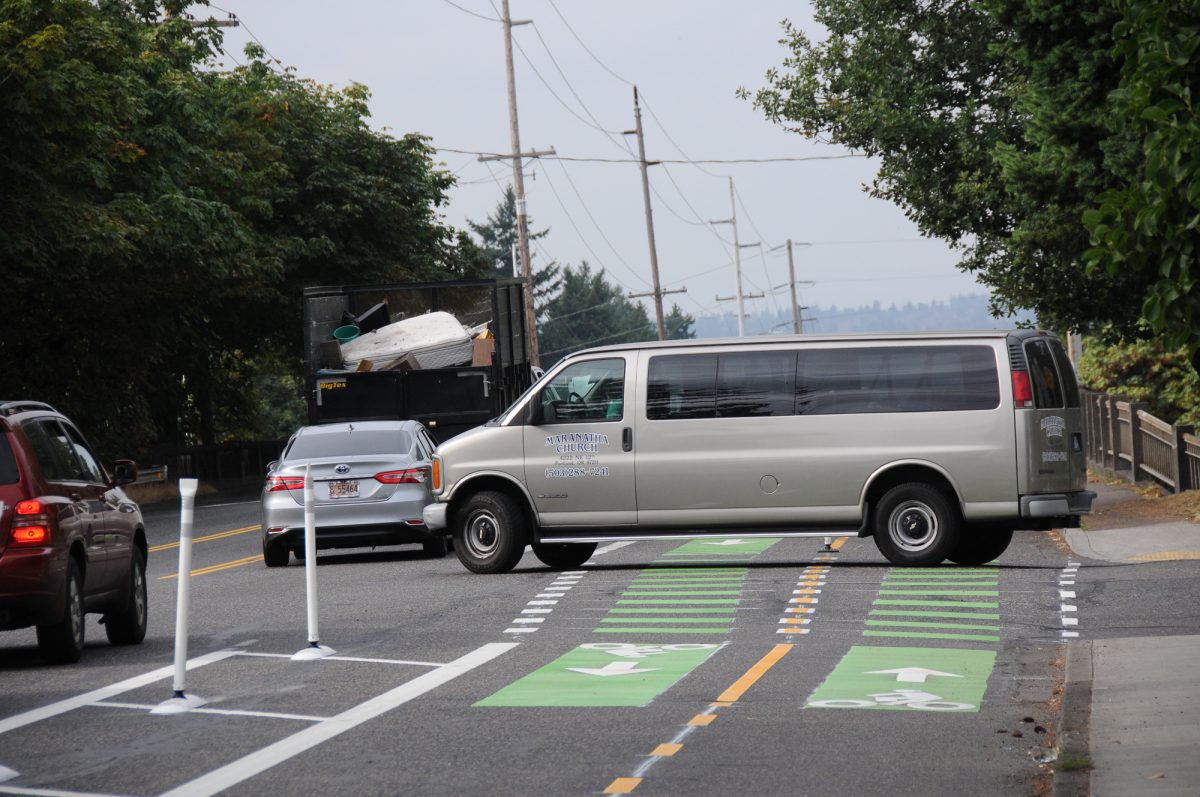
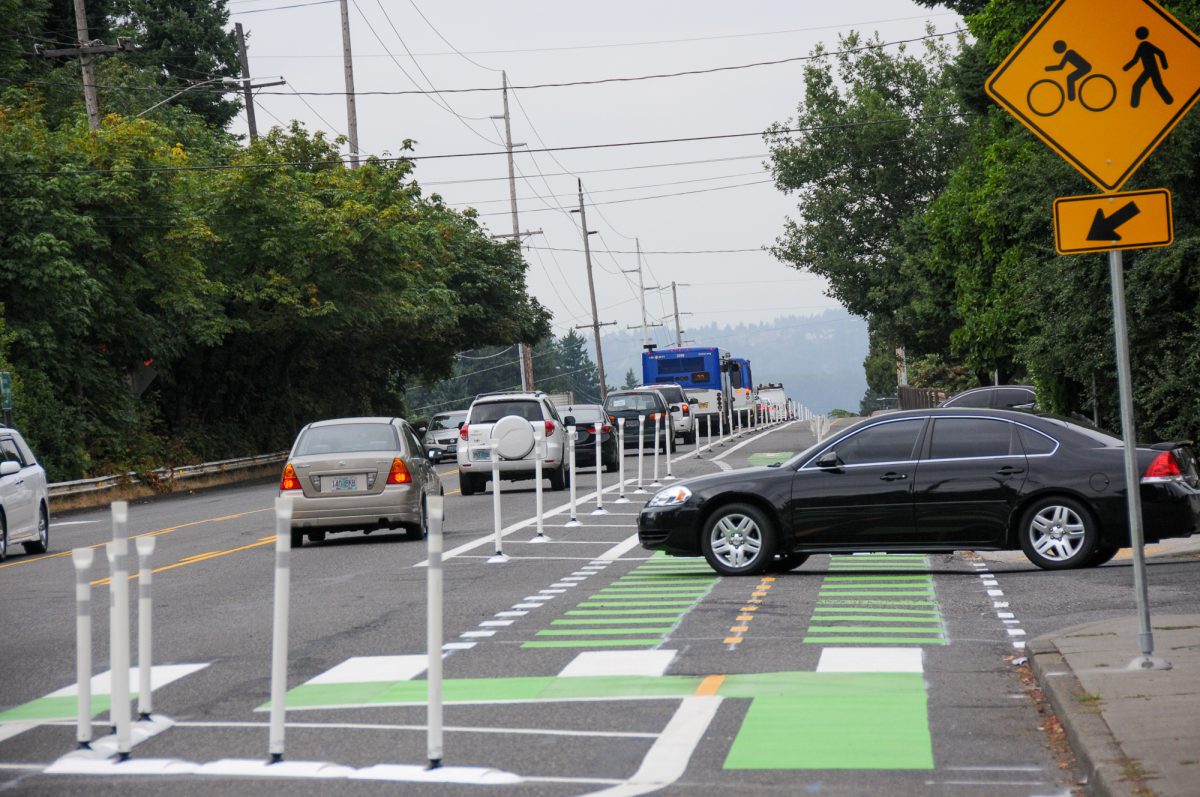
We all know how confused many drivers get when they see a bicycle user at a four-way stop intersection. Now imagine how that plays out in this novel scenario. As always, if everyone is chill and respectful, it’s not that big of a deal. But that’s a big “if”. In the time I observed these intersections, everything worked OK. One problem I noticed, which I’ve also noted at other protected bike lanes around town, is that auto users frequently block the bike lane as they wait for a gap in traffic. Perhaps we need more “Do No Block Intersection” signs?
I’ll be curious to see how this works as more people start to bike here and the green pavement color and plastic wands begin to wear away. On a related note, I won’t be surprised when the stop signs are destroyed by a driver.
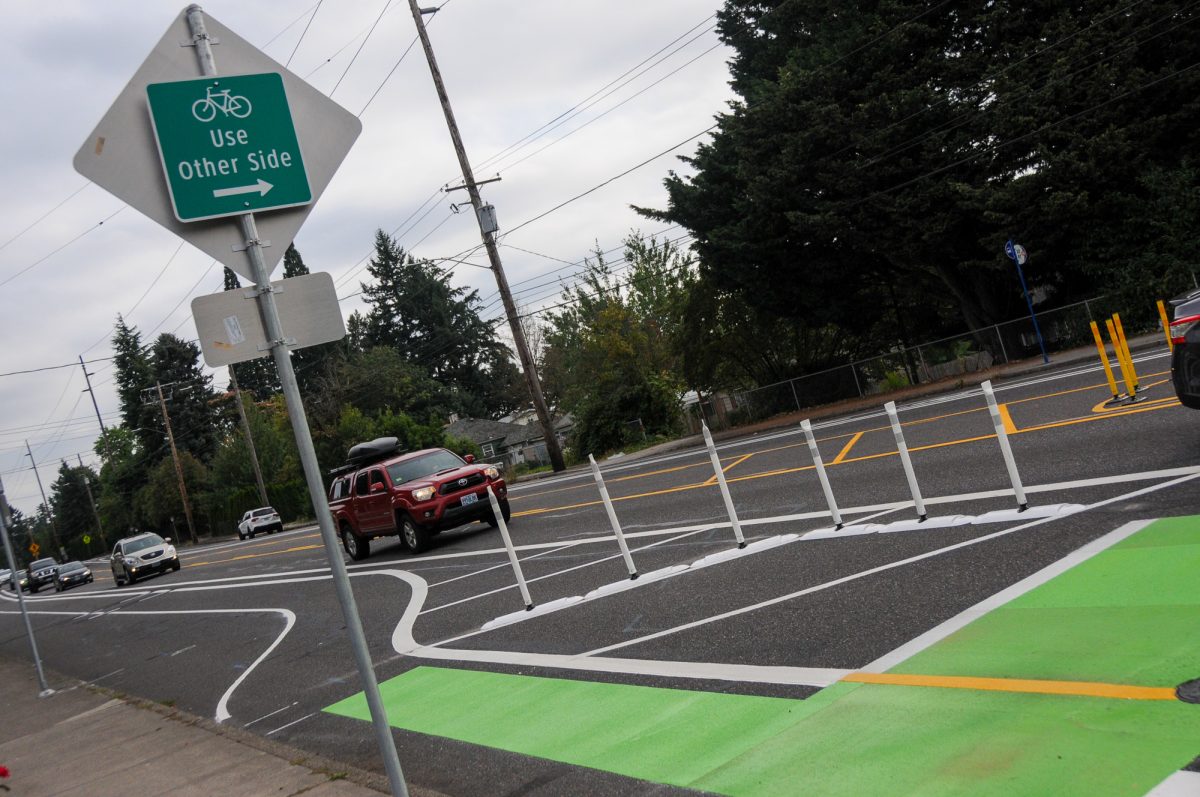

At Morris Street, the two-way bike lane ends and there’s a bike crossing that takes you back to the west side of 102nd to continue southbound toward Gateway. It’s great to have a new bikeway and safer street design that connects to the new protected bike lanes on the Halsey-Weidler couplet. I just wish the connection was a bit stronger. As I approached Weidler, my nice wide lane got narrower and the paint had worn off. The last block-and-a-half before connecting to the new protected bike lane was much more stressful than I had hoped.
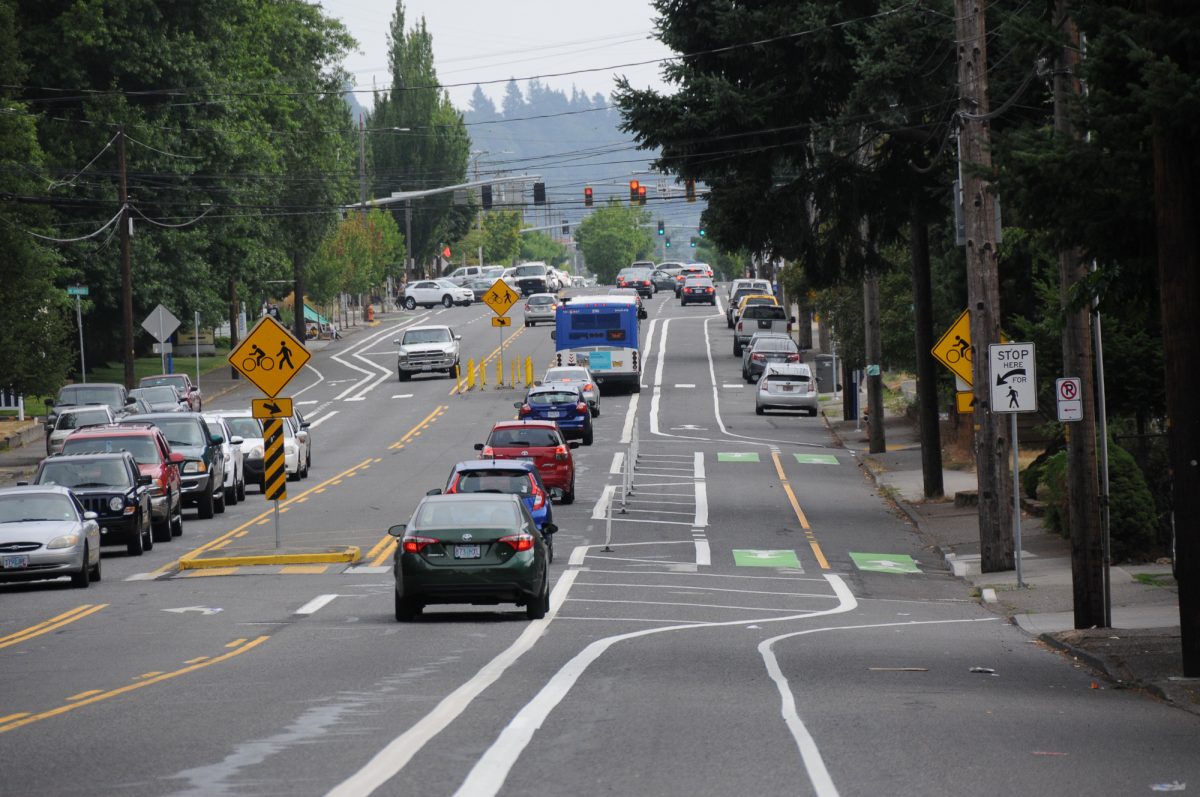
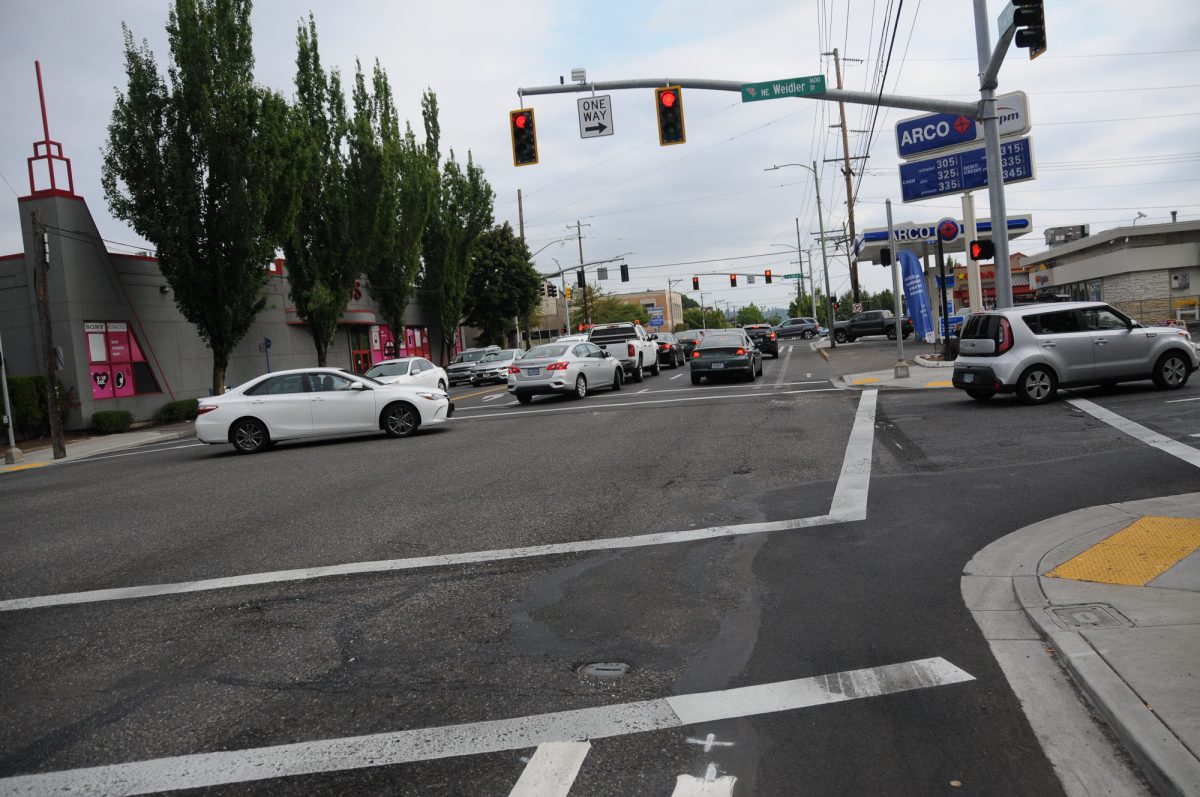
PBOT is still working to complete this project. Later in summer they will add another crossing at NE Thompson, adjust signal timing at Fremont, built that ramp from the overpass sidewalk to the two-way bike lane, and add more bike symbols. The city also plans to lower the speed limit to 30 mph this fall. After everything is done, they’ll analysis traffic data and public input. Here’s what PBOT says will happen next:
“In winter and spring of 2020, PBOT will release a final design based on the project evaluation. If the new roadway configuration is maintained, the design will be implemented in Phase Two, including a crossing at NE Beech Street, converting the crossing islands to permanent concrete islands, adding curb extensions and upgrading curb ramps, adding several upgrades to the NE Fremont Street intersection, and adding any other project enhancements that are included in the permanent design.”
If you’ve ridden this and want to share feedback, contact PBOT Project Manager Christopher Sun at (503) 823-5391 or Christopher.Sun@portlandoregon.gov.
I’ll be riding this again tonight (8/13) with the PBOT Bicycle Advisory Committee during their annual bike tour (starts at 6:10 pm from Franklin High School if you’d like to join) that will be led by PBOT Bicycle Coordinator Roger Geller. Stay tuned for updates.
— Jonathan Maus: (503) 706-8804, @jonathan_maus on Twitter and jonathan@bikeportland.org
Never miss a story. Sign-up for the daily BP Headlines email.
BikePortland needs your support.


